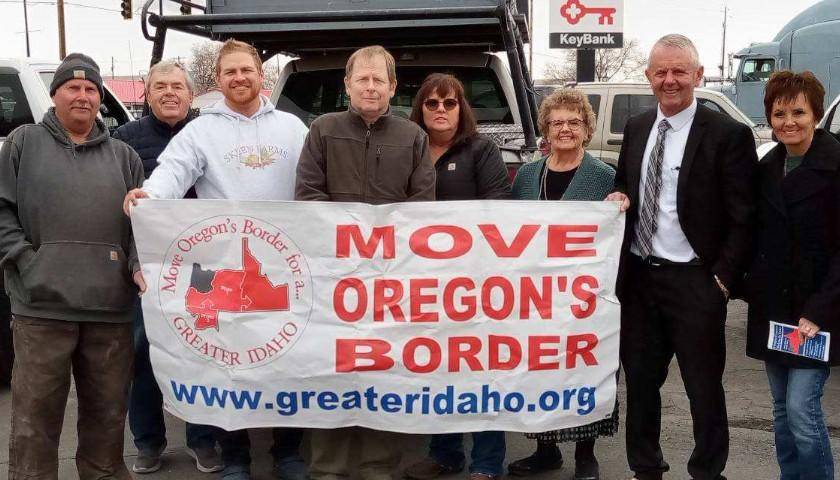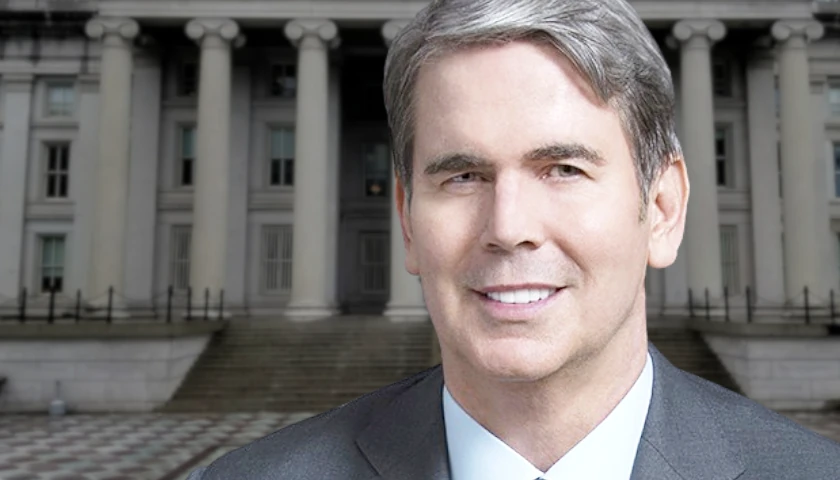by Kurt Mahlburg
The Greater Idaho movement might be the most tangible and effective political rebellion taking place today in America.
You’ll find no anarchists in its ranks, however. This movement is led by humble rural conservatives and has gained breathtaking traction through little more than grassroots activism and democratic participation.
The latest development: Last week, residents of Crook County in eastern Oregon voted in favor of starting negotiations to secede from their state and come under the jurisdiction of Idaho.
Incredibly, Crook County is the 13th county to pass the measure. Since 2020, 17 of Oregon’s 36 counties—or almost half the counties in the Beaver State—have voted on the “Greater Idaho” proposal, and only four have rejected it.

“The voters of eastern Oregon have spoken loudly and clearly about their desire to see border talks move forward,” Greater Idaho Executive Director Matt McCaw said in a statement, according to News Nation. “With this latest result in Crook County, there’s no excuse left for the Legislature and Governor to continue to ignore the people’s wishes.”
McCaw also stated, “We call on the Governor, Speaker of the House, and Senate President to sit down with us and discuss next steps towards changing governance for eastern Oregonians, as well as for the legislature to begin holding hearings on what a potential border change will look like.”
If ultimately successful, the Greater Idaho movement would redraw the state border 200 miles to the west, reducing the geographical size of Oregon by around 70 percent. Idaho would gain every county east of the Oregon Cascades and grow in size by a whopping 80 percent. A second phase could even see portions of northern California secede to join Idaho.
The movement, which has gained national attention, began just four years ago, as reported at the time by Intellectual Takeout.
So, why are Oregon counties voting to join Idaho?
“The Oregon/Idaho line was established 163 years ago and is now outdated,” the movement explains on its website. “It makes no sense in its current location because it doesn’t match the location of the cultural divide in Oregon.”
This week, McCaw appeared in an interview with Fox News Digital to comment on the latest development, making a compelling case for his movement’s proposal.
“The state of Oregon is divided geographically by the Cascade Mountain Range and that geographic divide is also a huge cultural divide,” he said. “So, on the west side of Oregon you have a different climate, it’s a different economy, it’s a different culture and more urban. It’s a very different place than the east side, where there are agricultural people who are very conservative and traditional.”
McCaw explained that the state of Oregon is currently engaged in a political tug-of-war between these two vastly different groups.
“Eastern Oregonians are very different from western Oregonians,” he said. “You can take almost any issue that is a political hot topic, whether that’s immigration or taxes or abortion or gun rights or drug criminalization … and what the people of Eastern Oregon want for their communities is different from what the people of Western Oregon want.”
The COVID era especially exacerbated these differences, McCaw noted.
“During COVID, the state of Oregon was one of the most extreme. They closed businesses across the state, they closed churches across the state, they closed schools, they imposed mask mandates and later vaccine mandates,” he explained.
McCaw believes Oregon’s “heavy handed” COVID rules helped “supercharge” the Greater Idaho movement.
He argues that the movement he leads presents a long-term solution to the “partisan bickering” happening within the state—one that will “lower political tension” and “create win-wins for everybody involved.”
It all sounds well and good, but is the movement McCaw leads all just a pipe dream?
As critics and skeptics of the movement have often noted, enthusiasm and even local ballot measures will not be enough to carry the day. For the proposal to succeed, the legislatures of both states would have to approve the measure, and then it would also need a green light from the U.S. Congress.
Even so, common sense dictates that conservative Idaho would be more than happy to grow their state by 65,000 square miles and 800,000 mostly conservative residents.
The major hurdle, then, would be lawmakers in Salem, Oregon. Can they, too, be persuaded? Would they be able to let go of a tax base of so many people?
Certainly, the rural-urban divide is, for now, here to stay, but could this be the way for voters in places like rural Oregon to once again feel like their voices are heard in politics? Or is this just another way for Americans to further the nation’s divide?
Watch this space. The Greater Idaho movement isn’t going away anytime soon.
– – –
Kurt Mahlburg is a contributor for Intellectual Takeout.
Photo “Greater Idaho” by the Greater Idaho movement.



